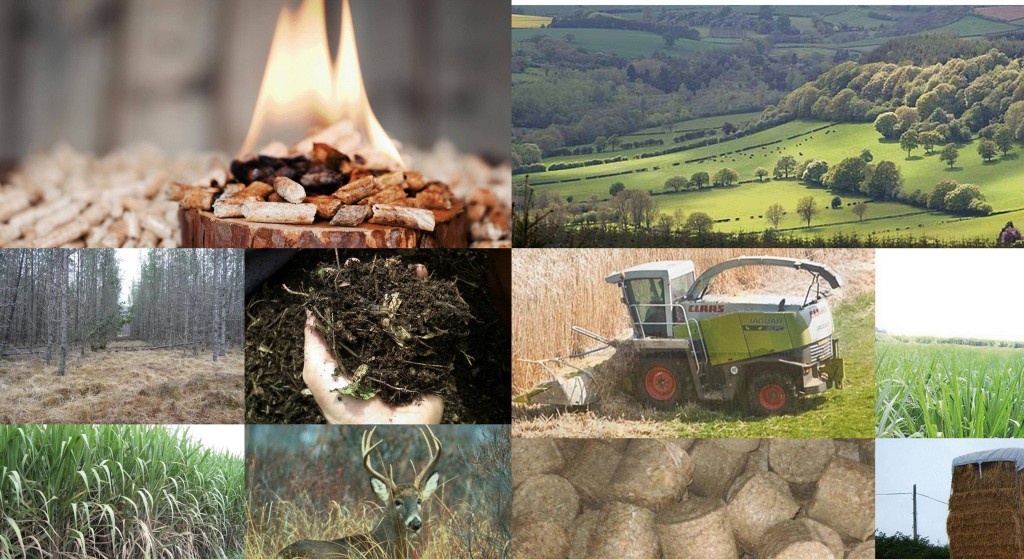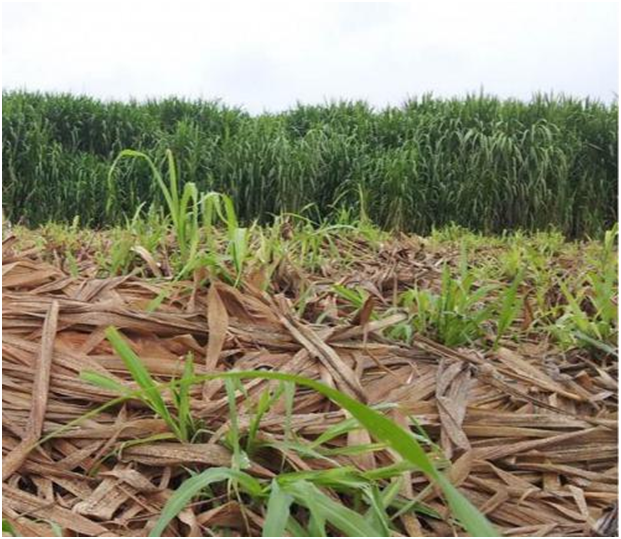
5 reasons to cultivate renewable biomass
Biomass can be a good reason to reforest and cultivate perennial species on marginal lands. Renewable energies from cultivated perennial biomass crops can help us to promote a sustainable greener world. Some researchers in the past used to think of energy crops as intensive options with huge inputs, replacing food production systems and producing more emissions than fossil energy sources. Let us review 5 supporting reasons to cultivate renewable biomass from perennial herbaceous crops and woody species to produce renewable energy in areas not dedicated to food production.
1 – ADAPTATION FOR CLIMATE CHANGE: REFORESTATION
Fossil energies are becoming more and more expensive. There are enough fossil sources for upcoming years, but the cost to get them is becoming huge while environmental impacts are worsening.
If we reforest, we could have a great benefit in several ways we know. However, during the last decades, biomass to energy technologies changed a lot and now they are more and more easy to adopt at different scales. You can replace diesel motors, produce air-cleaned stoves for domestic uses and have bio-power or methane. All of them, are systems working commercially in most developed countries of the world and increasing each year.
When biomass is produced, you replace fossil energy sources. If thermal applications, bio-power, syngas, methane, or 2nd generation biofuels are considered, several kinds of biomass from cultivated species are viable.
We need to reforest much more. But how? Who is going to pay the bill? And for what use and market? Nobody doubts reforestation as an adaptation measure to combat climate change and there is enough scientific backup. However, there are only some regions with pulp sectors or forestry companies promoting reforestation on degraded lands and there are millions of hectares that are not being cultivated for a variety of reasons. The biggest limitation seems to be the lack of final users for biomass and of course financial.
2 – WE COULD REPLACE UNSUSTAINABLE SYSTEMS. LET’S TALK ABOUT THE FOOD FOOTPRINT

Unsustainable food systems can be improved in a biobased economy.
A person’s food footprint (foodprint) is all the emissions that result from the production, transportation, and storage of the food supplied to meet their consumption needs. We chose to focus on food supply, rather than only food consumption because a large proportion of food is lost at the retail and consumer level. Although emissions also occur when people transport, store, and cook food, these emissions are omitted from our calculations as they are captured in travel and housing footprints.
A landmark scientific assessment commissioned by the United Nations Environment Program (UNEP) has confirmed that agriculture has a monumental impact on Earth’s finite resources. According to the study, 38% of the world’s total land area was used for agriculture in 2007 and agriculture is responsible for over 70% of global freshwater consumption.
Additionally, food wastes can be used and bioenergy crops can be used to complement supply chains. See an example of biogas in the Caribbean (see Tibbar).
Here you can estimate your food footprint. Try it.
Most alarming, however, is the inefficiency of our food production system, encouraged by diet preferences in developed countries especially, but increasingly worldwide. Even in comparison to industrial activities, which are heavily criticized for their impacts on the atmosphere and biosphere, “agricultural processes have an inherently low efficiency of resource use, which renders food, fibers, and fuels from agriculture among the more polluting resources”.
3 – CULTIVATE BIOMASS ON SURPLUS AND DEGRADED LANDS CAN GENERATE INCOME AND WELFARE

Biomass crop at a small farmer’s scale
Degraded and low-competitive lands are available worldwide (FAO estimates around 2 billion hectares) and they are not decreasing but expanding. Deforestation rates have been decreasing in some countries but deforestation’s absolute numbers are huge anyway. We cut millions of trees every day in a 100% UNSUSTAINABLE manner.
Even if a discussion about marginal land availability is quite complex everyone agrees that we need to reforest as much as possible and millions of hectares have been deforested already for cattle and crops. Once a land has been deforested most of it is occupied by ranchers to produce grasslands and beef cattle. Timber companies use some of the raw materials and residues from clearings and huge quantities of biomass are just burnt without any reasonable use or benefit but a net impact on the environment.
New biomass technologies allow most developing countries to find new financial resources producing renewable energy right from residues available and new forestry activities. Synergies with pulp companies or traditional forestry may allow several advantages (double purpose, for example, wood and energy consumed locally or power to the grid).
Reforestation and renewables are feasible and the advantage is clear with millions of hectares with feasibility. We just need knowledge and to select the right choices for each area to boost productivity without affecting food sectors in low competitive or unused lands.

Many areas have lands not profitable for wood but competitive for species already tested as biomass dedicated energy crops
There is an action to take at that moment. Promotion of sustainable bioenergy uses. Taking residues from those areas that government cannot avoid being deforested is very doable. Rural areas can use biomass collected to replace diesel when drying grains in Brazil or Paraguay for example. But using biomass feedstock to produce energy in all the ways we know will be critical and we need to respect sustainability criteria. And then a system that can promote reforestation is possible. Agroforestry or any other woody or herbaceous managed perennial systems to produce energy on those degraded lands are just the beginning for a new bio-based economy.
Biomass produced from reforestation is renewable if managed properly. We are not supporters of not sustainable methods, deforestation, or first-generation biofuels replacing wood. Any plantation for biomass should be managed sustainably to respect soil carbon and nutrient balances, water cycling, and biodiversity. New plantations can be managed and biomass extractions are compatible to respect environmental needs and produce renewable energy.
Today, it is very well known that wildfires can be avoided when a native forest is reasonably managed and biomass stem wood and fallen branches are handled out to be used for Bioenergy purposes. Despite environmental benefits, the replacement of expensive and not renewable fossil energy often generates rural employment, sustainableincome, and wealth.
4 – THE CURRENT SCENARIO IS NOT SUSTAINABLE (BY FAR!)
Several policies are not promoting sustainable patterns. Governments give priority to cash annual crops to obtain profits and they mostly don’t care about sustainability in the long term. At the same time, many countries face dramatic challenges regarding firewood or biomass as we see today. In Latin America or Asia where deforestation by ranchers slash and burn, and soybean and palm plantations have almost no policies to maximize social welfare and are 100% NOT sustainable in the long term. Some countries like Paraguay have declared biomass energy emergency and reforestation for firewood is expected to be a major priority.
European Common Policy and Crops
Some good examples can be found when analyzing the Common Agricultural Policy (CAP) reforms and historical agricultural policy trends in Europe. The CAP accounts for about 38 percent of the EU’s budget.
Europe wants a greener continent. They admit subsidies dependence, high subsidies for the unsustainable food system, lack of rotations and mono-cropping systems, excessive rates for fertilizer uses, and the need for promotion of organic farming and best practices.
The two main potential problems that would be caused by the abolition of the current subsidy system in Europe (land abandonment and farm insolvency) could only be addressed by biomass perennial systems to produce renewable energies.
More options are needed, lower agricultural risks, better insurance systems for farmers, higher quality products and lower (and informed) footprint, and competitive energy uses.
Biomass can play a significant role is used in rural areas to interact with agri-industries. From biogas and dairy production systems to gasifiers or bio-heat in breweries and distilleries, or power stations that can supply greener electricity to the grid, many significant synergies could improve the current situation and many of them are commercially adopted already with existing tested technologies. Add to this the upcoming trends we see with advanced biofuels which will require significant amounts of straw and woody biomass in rural areas.
Perennial pastures and short rotation forestry are both viable options with lower inputs and can be profitable businesses for the long term in particular where the market limits some food alternatives.
The lack of policies and promotion of permanent or perennial grassland, shrubs, bushes, native managed forestry, and dedicated plantations for biobased products will require holistic management of resources. This is the only way to limit the expansion of the most impacting activities for food and energy and promote realistic sustainable solutions with great synergies. This is also a good way to solve the big problems of indirect land use changes.
The worst scenario in the EU is just beginning to approach because several subsidies are not sustainable and farmers in the US, Latin America, Africa, and Asian markets are just starting to become more competitive. Farmers and policies should change in Europe and some countries with fragile semi-arid and low competitive agriculture like Spain are facing a big challenge. The trends in Europe are clear and the commission looks for a big challenge in 2020 called “Living well within the limits of our planet“
Another big issue is trading barriers that are currently being eliminated. Several products begin to get inside the EU from Northern Africa, Asia, and Latin America. More certifications and regulations are also expected to protect Europe and energy usage for transport of biobased products (including food) is being considered for regulations. Wood pellets are increasingly being imported each year to European markets.
Agricultural subsidies are expected to be lower and most analysts and policymakers show that the international community wants environmental services and renewable energies associated with best agricultural practices. In Europe, even organic food is encouraged by the Commission at the time more and more land abandonment happens because the EU imports commodities including cereals and meat that are not so competitive in the union. Several “landscape” systems are possible to be considered to have lower water usage, higher carbon to the soil, and improvement of biodiversity that can be achieved when biomass perennial systems are implemented.
Big food suppliers
Another great example of NOT sustainable food production system is the one promoted by soybean monocultures in countries experiencing too fast changes towards oil export like Argentina, Paraguay, and Bolivia. Their approach to insect and weed management on GMO soybean depends upon the heavy use of a few biocides to control pests. And most of these pests are large problems mainly because of the biological simplification of the agricultural system.
This simplification—represented by huge areas devoted to only one or two crops on very large farms for many years with little uncultivated area— requires more pesticides, because pests can more easily build up on crops when they are adapted to these crops and practices. Soybean monocultures have been reported to promote nematodes and long-term diseases like Rhizoctonia, a fungus with resistant structures that can stay for decades in the soil once farmers repeat soybean several years without any rotation.
Many pests are selective about the crops they infect or consume, so alternating (or rotating) crops reduce the need for pesticides. For example, in much of the Corn Belt, corn rootworms are not big problems when corn is rotated with soybeans or other crops, because rootworms only thrive on corn.
Some good selected videos to start understanding this are here below:
90 seconds thinking about soil
Soybean and corn monocultures (lack of rotations with grasslands) are also good examples of policies that are not sustainable in the long term. Fortunately, there is still some rotation in many agricultural countries, however, several not competitive regions in Brazil, Argentina, the US, Russia, and China as well as other important food suppliers, could find a great benefit in introducing sustainable rotations. Managing semiarid lands can find a good advantage in water resources as some biomass alternatives consume less water. Additionally, large areas have no access to markets and can produce power to the grid.
5 – ONLY PERENNIALS HAVE LOW INPUTS AND RESIDUES ARE NOT ENOUGH TO ACHIEVE THE TARGETS
Biomass residues are just not enough.
Europe has been experiencing a massive valorization of biomass because it can replace fuel oil, gas, and other polluting and not sustainable forms of energy. Energy shortages are expected more than ever before. The Environmental European Agency has warned about residues and claims an increasing need to grow sustainable bioenergy crops since a long time.
A Holistic management to combat desertification (now we can do it for renewable energy as well)
Allan Savory is a Zimbabwean biologist, farmer, soldier, exile, environmentalist, and winner of the 2003 Banksia International Award and the 2010 Buckminster Fuller Challenge. He is the originator of holistic management. Savory has said, “Only livestock can save us.” Through reversing desertification, he believes rangeland soil can sequester vast amounts of CO2.
Savory never studied the synergies between their agri-ecological systems for cattle with controlled grazing methods and holistic approach for biomass conversion technologies that now are ready at commercial scale as we see today. However, the concepts are very similar. Huge carbon sequestration from perennials can help desertified lands to produce goods including bio-energy. Small gasifiers, boilers, or heaters but also digesters, fermenters, and many other facilities use residues and biomass from cultivated species.
The great advantages published in his book on rotations and managed cuttings for grasslands, are possible to be considered for bioenergy systems and feedstock.
Biogas and energy crops are already feasible. Our company has been involved in one of the most amazing projects with energy crops for biogas in the tropics. Link a Tibbar en el portfolio
Several digesters are compatible with perennial pastures and silage that can be used both for cattle and dedicated energy crops in the same farm at several scales in developed or developing countries.

Biomass plantation for feedstock in Mexico (7000 hectares).
Enjoy Allan Savory’s Holistic Management Documentary.

